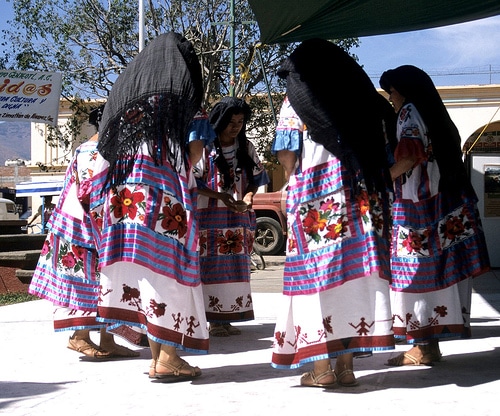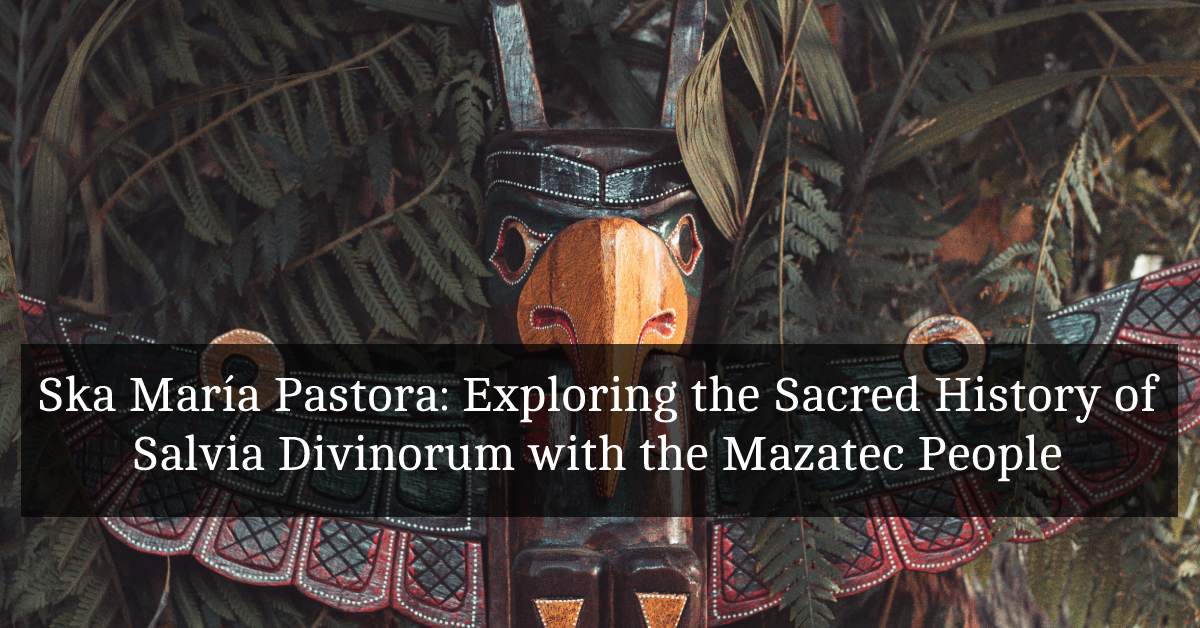Salvia divinorum is a potent hallucinogenic plant that has been used by the Mazatec people of Oaxaca, Mexico for centuries for shamanic and spiritual purposes. The plant has gained popularity in recent years among Westerners seeking altered states of consciousness, but its traditional use and cultural significance among the Mazatec should not be overlooked.
The Mazatec people are an indigenous group that has inhabited the region of Oaxaca, Mexico for thousands of years. They have a rich history of using various plants and fungi for spiritual and medicinal purposes, and Salvia divinorum is one of the most significant of these. The Mazatec call the plant “ska María Pastora,” which translates to “the Virgin Mary’s herb,” and consider it to be a sacred plant that can provide insights into the nature of the universe.

The history of Salvia divinorum use among the Mazatec is not well-documented, but it is believed to date back hundreds of years. The plant was first introduced to the Western world in the 1930s by ethnobotanist Jean Basset Johnson, who collected samples of the plant during his travels in Mexico. However, it wasn’t until the 1990s that the plant gained widespread attention in the West, when it became popular among psychedelic enthusiasts and spiritual seekers.
In traditional Mazatec culture, Salvia divinorum is used in a ceremony known as a “velada.” During a velada, a shaman, known as a “curandero,” prepares the plant by crushing the leaves and mixing them with water to create a thick, green liquid. The liquid is then consumed by the participants, who lie down on mats and wait for the effects to take hold.
The effects of Salvia divinorum are powerful and can vary widely depending on the dose and method of consumption. At lower doses, the plant can produce a mild sense of euphoria, enhanced colors and textures, and altered perception of time. At higher doses, however, the effects can be more intense and potentially unsettling. Users may experience vivid, dreamlike hallucinations, a loss of self-identity, and a sense of being transported to other dimensions or realms of existence.
Despite its potential for intense experiences, Salvia divinorum is not considered to be addictive or habit-forming, and it is not known to cause any long-term physical or psychological harm. In fact, many Mazatec people consider the plant to be a medicine, and it is used to treat a range of physical and mental ailments, including headaches, diarrhea, and depression.
However, the use of Salvia divinorum has not been without controversy, particularly in the Western world. In some countries, including the United States and Canada, the plant has been banned or restricted due to concerns about its potential for abuse and the lack of research into its effects. Some users have reported negative experiences with the plant, including feelings of paranoia, confusion, and anxiety, and there have been a few cases of accidents and injuries associated with its use.

Despite these concerns, the use of Salvia divinorum among Westerners continues to be popular, with some seeking to replicate the shamanic experiences of the Mazatec people, and others using it as a means of exploring their own consciousness and spirituality. However, it is important to remember that the plant has a long and rich history of use among the Mazatec people, and that its traditional cultural significance should be respected and preserved.
In recent years, there has been growing interest in the scientific study of Salvia divinorum, and research has begun to shed light on the plant’s pharmacology and potential therapeutic uses. The active ingredient in Salvia divinorum is a chemical compound called salvinorin A.
A Brief History Of The Mazatec People
The Mazatec people are one of the oldest indigenous groups in Mexico, with a history spanning thousands of years in the region of Oaxaca. The early history of the Mazatec people is largely shrouded in mystery, but archaeological evidence suggests that the region has been inhabited since at least 5000 BCE.
The earliest known inhabitants of the Oaxaca region were likely hunter-gatherers who lived in small groups and subsisted on wild game, fish, and gathered plants. Around 2000 BCE, the region began to see the development of agricultural societies, with people beginning to cultivate crops like maize, beans, and squash. The early Oaxacan cultures were characterized by complex social structures and artistic traditions, with evidence of elaborate pottery, jewelry, and sculpture.
By the first millennium CE, the Oaxaca region had become a hub of trade and cultural exchange, with various groups of people coming and going from the area. One of the most significant of these groups was the Zapotec civilization, which emerged around 500 BCE and built a number of impressive cities and temples in the region. The Zapotec civilization was characterized by its sophisticated architecture, writing system, and artistic traditions, and it exerted a significant influence on the surrounding cultures.
The Zapotec civilization was followed by the Mixtec civilization, which emerged around 900 CE and established a number of city-states throughout the region. The Mixtec civilization was known for its skill in metallurgy, with Mixtec artisans producing intricate gold and silver jewelry and other objects. The Mixtec also developed a complex writing system, which has been studied and deciphered by modern scholars.

Throughout these early centuries, the Mazatec people were one of many smaller groups living in the Oaxaca region. The early history of the Mazatec people is not well-documented, but it is believed that they lived in small, semi-nomadic groups and subsisted on a combination of hunting, fishing, and gathering wild plants. The Mazatec were also known for their skill in pottery and weaving, and they developed a unique artistic tradition that incorporated elements of their spiritual beliefs.
The Mazatec people were not a unified group, but rather a collection of smaller communities and clans that shared similar cultural traditions and practices. The Mazatec were known for their deep connection to the natural world, and they developed a complex spiritual tradition that incorporated the use of various plants and fungi. One of the most significant of these plants was Salvia divinorum, which the Mazatec used in ceremonies to connect with the divine and heal both body and soul.
The early history of the Mazatec people is largely unknown, but it is clear that they played an important role in the cultural and spiritual traditions of the Oaxaca region. Today, the Mazatec people continue to maintain their unique cultural heritage, including their use of Salvia divinorum in traditional ceremonies. The Mazatec are one of many indigenous groups in Mexico whose rich history and cultural traditions are being recognized and celebrated by a growing global community.
Sources:
- Wasson, R. G. (1962). A New Mexican Psychotropic Drug from the Mint Family. Botanical Museum Leaflets, Harvard University, 20(4), 77-84.
- Valdés, L. J., & Díaz, J. L. (2010). Salvia divinorum: overview of use, pharmacology, and toxicity. Journal of clinical psychopharmacology, 30(2), 126-131.
- Hanes, K. R. (2010). Salvia divinorum: Shamanic plant medicine. Inner Traditions/Bear & Co.
- Feinberg, A. P. (1989). Ethnopharmacologic search for psychoactive drugs: proceedings of a symposium held in San Francisco, California, January 28-30, 1967 (Vol. 13). Springer Science & Business Media.
- Grinspoon, L., & Bakalar, J. B. (1981). Psychedelic drugs reconsidered. Basic Books.
- DeKorne, J. (1994). Psychedelic Shamanism: The Cultivation, Preparation, and Shamanic Use of Psychotropic Plants. Ronin Publishing.
- Turner, D. M. (1996). The essential Salvia Divinorum. Haworth Herbal Press.
- Valdés, L. J. (1987). Salvia divinorum and the unique diterpene hallucinogen, Salvinorin (divinorin) A. Journal of psychoactive drugs, 19(3), 235-239.



